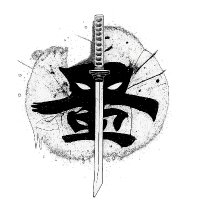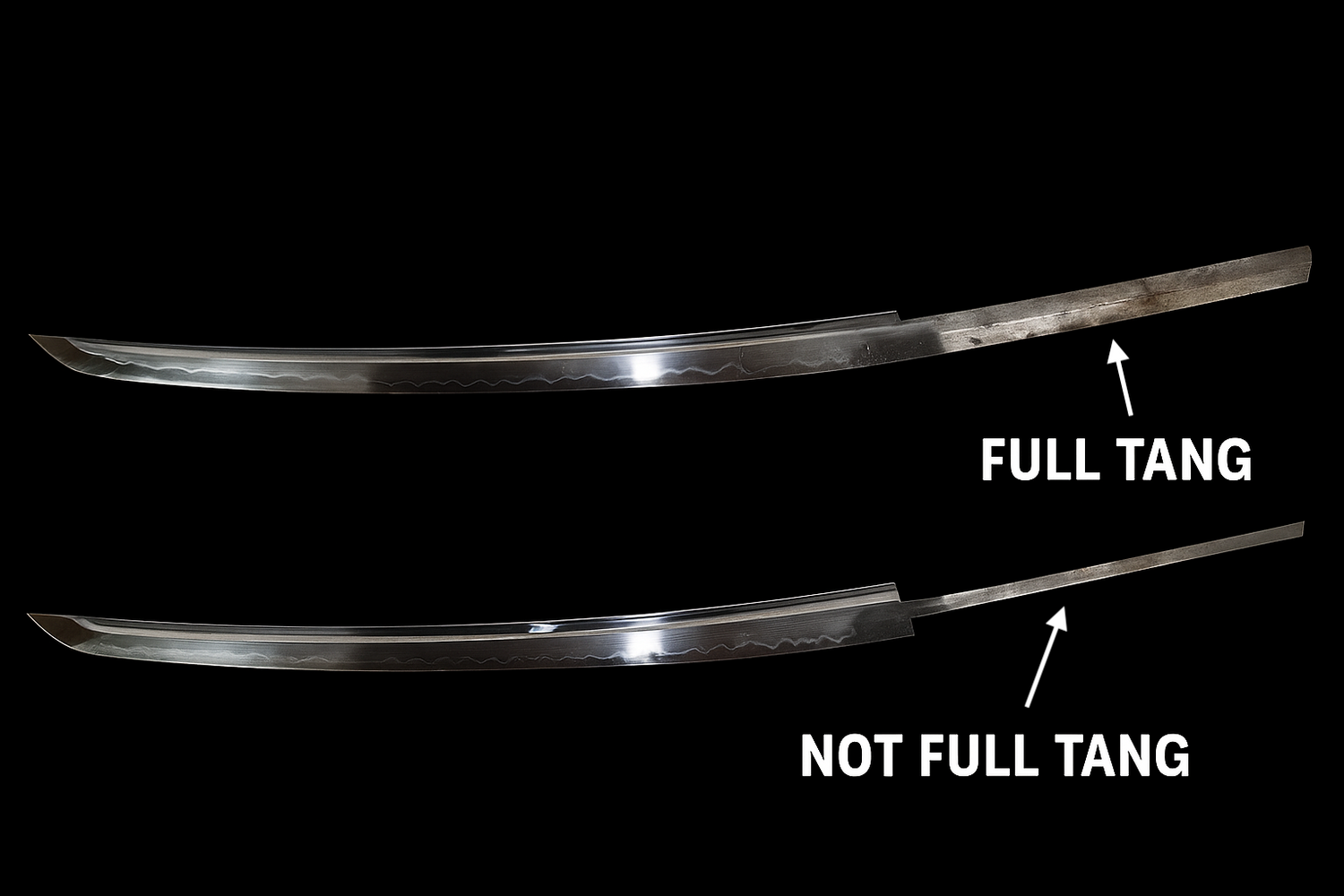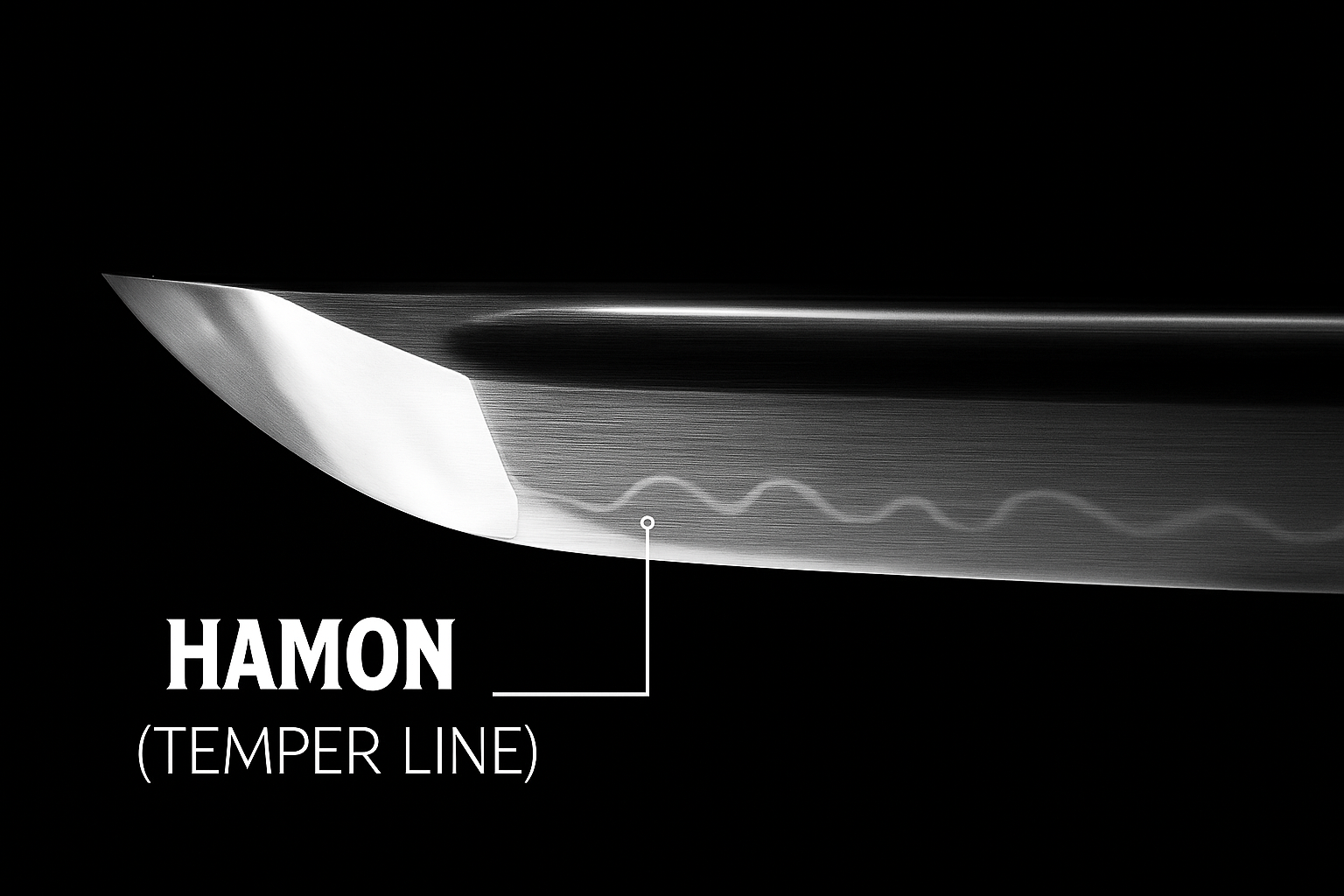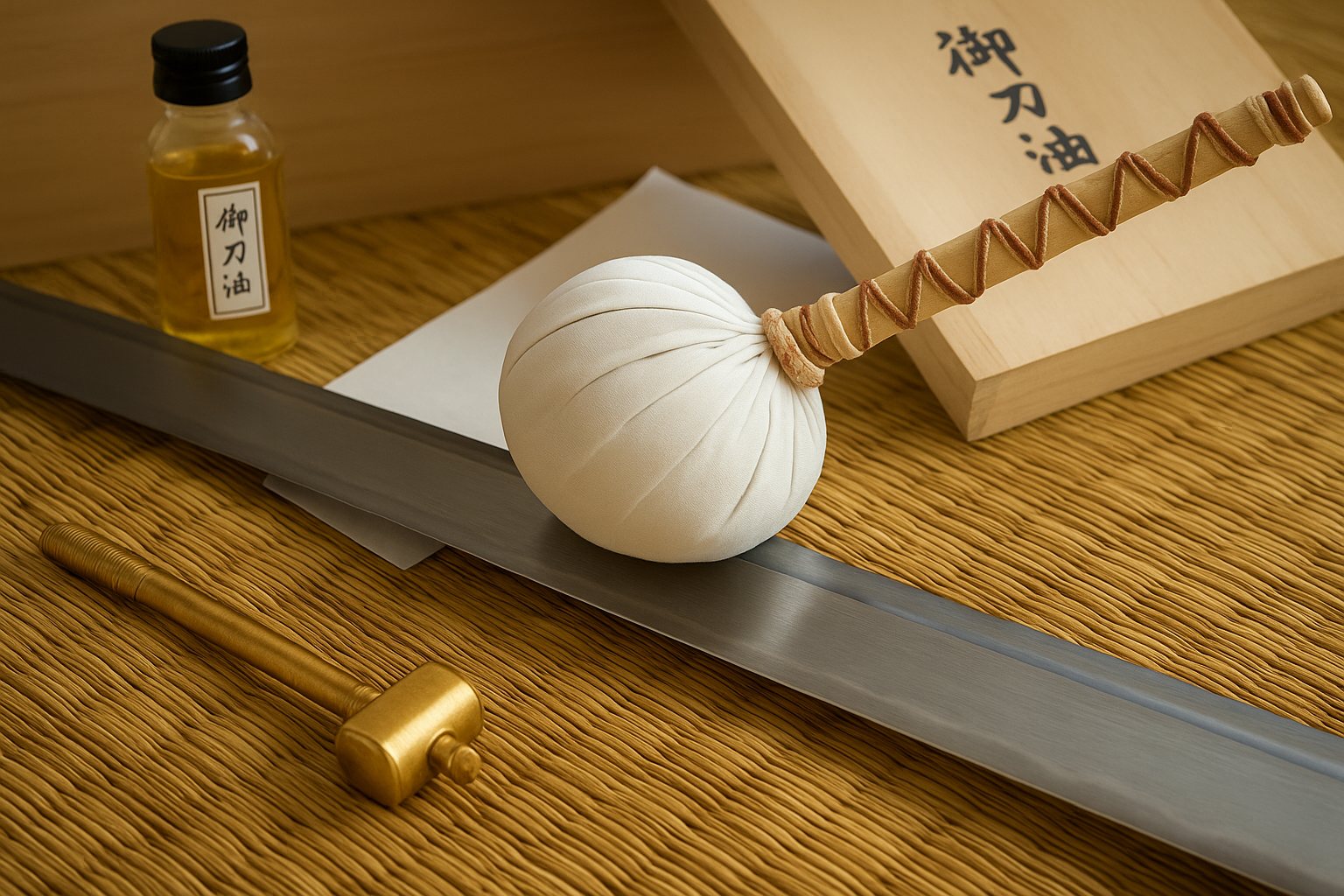When buying a katana, it's easy to get caught up in design, hamon, and materials, but one of the most important elements for function and quality is something that isn't always visible: the construction of the blade, specifically whether it's "full tang" or not.
What does full tang mean?
"Tang" refers to the part of the blade that extends into the handle. A "full tang" means that the blade is a single piece of metal that continues all the way through the handle. This allows the handle and blade to function as one unit, rather than two separate pieces joined together.
Why is it important?
Full tangs are essential for strength, balance and safety. A full tang katana is much more resistant to stress and is less likely to break at the handle. It also provides better weight distribution and more control, which is essential for training or practical use.
How do you know if a katana has a full tang?
It's not always visible, but if you see small rivets (mekugi) that hold the blade to the handle, often two, it's a sign that the blade is recessed all the way in. Reputable manufacturers usually also specify this in their product descriptions.
Full tang in our katanas
All Ghost Blades katanas are crafted with full tang construction. We don't compromise on function, and our swords are built to last, whether you're collecting, training, or just want a beautiful and deadly piece of art.



